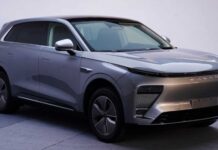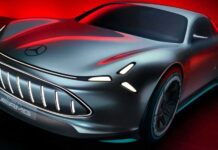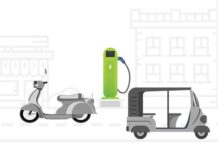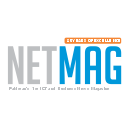The Berlin Gigafactory has recently unveiled an extraordinary development: the first Tesla Model Y equipped with BYD’s groundbreaking bladed LFP battery. This intriguing collaboration combines American car manufacturing, a Chinese battery technology, and German production. How did this unlikely alliance come to fruition? In this article, we delve into the details and shed light on this remarkable partnership between two industry giants.
The Unlikely Alliance: Tesla and BYD
While Tesla and BYD have never officially partnered, they are fierce competitors and dominant players in the global New Energy Vehicle (NEV) market, encompassing Plug-in Hybrid Electric Vehicles (PHEVs), Extended Range Electric Vehicles (EREVs), and Battery Electric Vehicles (BEVs). Both companies have been vying for supremacy in China and other international markets.
Despite their rivalry, recent reports indicate that BYD has become a supplier of bladed LFP battery packs to Tesla. These innovative batteries are manufactured by FinDreams, a subsidiary of BYD. The collaboration gained attention when German media announced that Tesla’s German plant had commenced production of the Model Y utilizing BYD’s LFP Blade battery. As a result, the first BYD-powered Model Y has been successfully manufactured.
The Revolutionary Product: Tesla Model Y with BYD’s LFP Battery
On May 20, just 16 days after confirming production, the Tesla Berlin plant rolled out the first Model Y equipped with BYD’s LFP battery. Although still in the prototype stage, the entry-level Model Y boasts a 55 kWh LFP battery, providing an impressive range of 440 km. In comparison, the entry-level Model Y in China utilizes a 60 kWh CATL battery, offering a slightly higher range of 455 km.
READ MORE: Unveiling the World’s First iPhone 14 Pro Max with Built-in Rolex Daytona Watch
Testers in Germany have uncovered fascinating insights into the performance of the new BYD-powered Tesla Model Y. Notably, this variant can maintain a remarkable 170-kW charging power, enabling it to charge from 11% to 71% in just 15 minutes. This charging speed significantly outpaces its conventional battery-powered counterpart.
Furthermore, the LFP batteries employed in the BYD-powered Model Y demonstrate superior charging capabilities compared to the CATL battery variant. While the CATL battery loses charging power rapidly after reaching 50% charge, the BYD battery retains its efficiency for longer periods. This groundbreaking technology positions the Tesla Model Y with BYD’s LFP battery as a faster-charging and more efficient option.
Despite the lack of clarity regarding its market availability, the partnership between Tesla and BYD serves as a testament to Tesla’s commitment to strengthening its foothold in the ever-expanding EV market. By leveraging BYD’s innovative bladed LFP battery technology, Tesla aims to further solidify its position as a leader in the electric vehicle industry.
Conclusion
The collaboration between Tesla and BYD has resulted in a groundbreaking development at the Berlin Gigafactory—the production of the first Tesla Model Y equipped with BYD’s remarkable bladed LFP battery. This unlikely alliance highlights the shared pursuit of innovation and dominance in the NEV market. With its impressive charging capabilities, extended range, and potential market release, the BYD-powered Tesla Model Y sets a new standard for electric vehicles. As Tesla continues to forge partnerships and incorporate cutting-edge technologies, it reinforces its position as an unrivaled force shaping the future of sustainable transportation.




